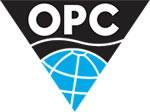Middle East / Africa
Country profile: Kenya
| Location: | Eastern Africa, bordering the Indian Ocean, between Somalia and Tanzania |
| Climate: | varies from tropical along coast to arid in interior |
| Terrain: | low plains rise to central highlands bisected by Great Rift Valley; fertile plateau in west |
| Size: | 582650 sq. km total (Land area: 569250 sq. km Water area: 13400 sq.km) |
| Population: | 37,953,838 |
| Languages: | English (official), Kiswahili (official), numerous indigenous languages |
| Government: | republic |
| Capital city: | Nairobi |
| Legal system: | based on Kenyan statutory law, Kenyan and English common law, tribal law, and Islamic law; judicial review in High Court; accepts compulsory ICJ jurisdiction with reservations; |
| Currency: | Kenyan shilling (KES) |
| Licensing: |
Country profile
The Kenyan government is encouraging foreign interest in oil exploration and there is a modest upstream oil industry. It is endowed with other energy sources including wood fuel, coal, solar and wind power, much of which is untapped. The country's commercial energy needs are supplied by electricity, coal, fuel wood and oil-derived products. Petroleum is Kenya's major source of commercial energy and has, over the years, accounted for about 80% of the country.s commercial energy requirements. Demand for oil in Kenya is quite small due to the country.s underdeveloped economy, which is heavily dependent on labour intensive and rain-fed agriculture systems.
The domestic demand for various petroleum fuels on average stands at 2.5 million tons per year, all of it imported from the Gulf region, either as crude oil for processing at the Kenya Petroleum Refineries Limited or as refined petroleum products. Prior to liberalization in October 1994, a significant feature of Kenya.s oil industry was a relatively high level of government.s direct participation, and a correspondingly low level of private sector involvement. Seven marketing and distribution companies were responsible for procuring and importing their own oil.
The National Oil Corporation of Kenya was mandated to supply 30% of the crude oil requirement into the country. Since liberalization, many new companies have been licensed by the government to engage in petroleum trading, especially import and export, wholesale and retail of petroleum products. However, despite this initiative, only about ten new entrants are actively trading with a market presence of less than 10% of the market share due to tariff and non-tariff barriers to entry. The Kenya Petroleum Refineries Limited, Kenya Pipeline Company Limited, National Oil Corporation of Kenya and Kenya Railways Corporation represent the government .s presence in the petroleum industry.
The Kenya Petroleum Refineries Limited is owned on a 50:50 equity holding between the government and three shippers, namely, Shell, British Petroleum and Caltex. The Kenya Pipeline Company Limited, Kenya Railways Corporation and private transporters are involved in transportation of petroleum products from Mombasa to other parts of the country and neighbouring countries. National Oil Corporation of Kenya Limited was incorporated in 1981 under the Companies Act (Cap 486). The company's main objective then was to coordinate oil exploration (upstream) activities. In 1988 the company was mandated on behalf of the government to supply 30% of the country's crude oil requirements that would in turn be sold to oil marketing companies for refining and onward sale to consumers.
In July 2000, the Petroleum Institute of East Africa was launched with the aim of promoting all areas of the oil sector in East Africa. In 1997, the East African Community (EAC) (dissolved in 1977 due to political differences) was revived to create a partnership between Kenya, Uganda and Tanzania. The aims of the EAC are, inter alia, to promote investment codes by protecting property and rights, and properly regulating the private sector. To date, there has been no evidence of exploitable petroleum reserves in Kenya although limited exploration has taken place over the last forty years. Only 30 wells have been drilled however.
The Kenyan government has spent in the region of US$ 1.6 million on oil exploration and is increasing its attempts to attract investors to the oil exploration industry. The National Oil Company of Kenya (NOCK) has made 17 blocks available for petroleum rights negotiations. The blocks are in the East African Rift System, the Anza Graben, the Mandera Basin, and the Lamu Embayment. The blocks are mainly onshore with the exception of the Southern Lamu Embayment which offers both onshore and offshore blocks.
Energy production and consumption
| Oil | Gas | |
| Production: | ||
| Consumption: | 64,000 bbl/day (2005 est.) | |
| Exports: | 8,563 bbl/day (2005 est.) | |
| Imports: | 70,540 bbl/day (2005 est.) | |
| Reserves: | ||
| Major fields: |
Kenya - recent news
| 22 Nov 25 |
Kenya: Eni awards five innovative agritech projects in Kenya Five agritech startups have been awarded in Nairobi at the conclusion of the third edition of the Kenya Agribusiness Entrepreneurship Program (KAEP), the entrepreneurial development initiative promoted by Eni Natural Energies (ENE) Kenya and Joule, Eni’s business school, in collaboration with the E4Impact foundation. |
| 27 Sep 25 |
Kenya: Tullow completes sale of Kenya assets to Gulf Energy Tullow Oil has successfully completed the sale of its entire working interest in Kenya to Auron Energy E&P, an affiliate of Gulf Energy. The sale of its Kenya subsidiary marks Tullow’s exit from the country after 14 years. |
| 11 Sep 25 |
Kenya: SONATRACH and National Oil Company of Kenya (NOC Kenya) sign Memorandum of Understanding SONATRACH and National Oil Company of Kenya have signed a Memorandum of Understanding with a view to seeking opportunities for the joint implementation of oil and gas projects in Kenya on the basis of balanced and mutual benefits. |
| 21 Jul 25 |
Kenya: Tullow Oil signs Sale and Purchase Agreement for strategic sale of Kenyan assets to Gulf Energy Following the announcement on 15 April 2025, Tullow Oil has announced the strategic sale of Kenyan assets to Gulf Energy for a minimum cash consideration of US$120 million, subject to customary adjustments. |
| 16 Apr 25 |
Kenya: Tullow agrees heads of terms for sale of Kenyan assets for $120 million Tullow Oil has announced that its wholly-owned subsidiary, Tullow Overseas Holdings, has signed a heads of terms agreement with Gulf Energy to sell Tullow Kenya, which holds Tullow’s entire working interests in Kenya, for a total consideration of at least $120 million. |
Kenya - more news
Other countries in this region
- Algeria,
- Angola,
- Bahrain,
- Benin,
- Botswana,
- Burundi,
- Cameroon,
- Central Africa Republic,
- Chad,
- Comoros,
- Congo (Brazzaville),
- Congo (Democratic Rep.),
- Cote d'Ivoire,
- Djibouti,
- Egypt,
- Equatorial Guinea,
- Eritrea,
- Ethiopia,
- Gabon,
- Gambia,
- Ghana,
- Guinea (Republic),
- Guinea Bissau,
- Iran,
- Iraq,
- Israel,
- Jordan,
- Kuwait,
- Lebanon,
- Liberia,
- Libya,
- Madagascar,
- Malawi,
- Mali,
- Mauritania,
- Mauritius,
- Morocco,
- Mozambique,
- Namibia,
- Niger,
- Nigeria,
- Oman,
- Palestine,
- Qatar,
- Rwanda,
- Sao Tome,
- Saudi Arabia,
- Senegal,
- Seychelles,
- Sierra Leone,
- Somalia,
- Somaliland,
- South Africa,
- South Sudan,
- Sudan,
- Syria,
- Tanzania,
- Togo,
- Tunisia,
- Uganda,
- United Arab Emirates,
- Western Sahara,
- Yemen,
- Zambia,
- Zanzibar,
- Zimbabwe











